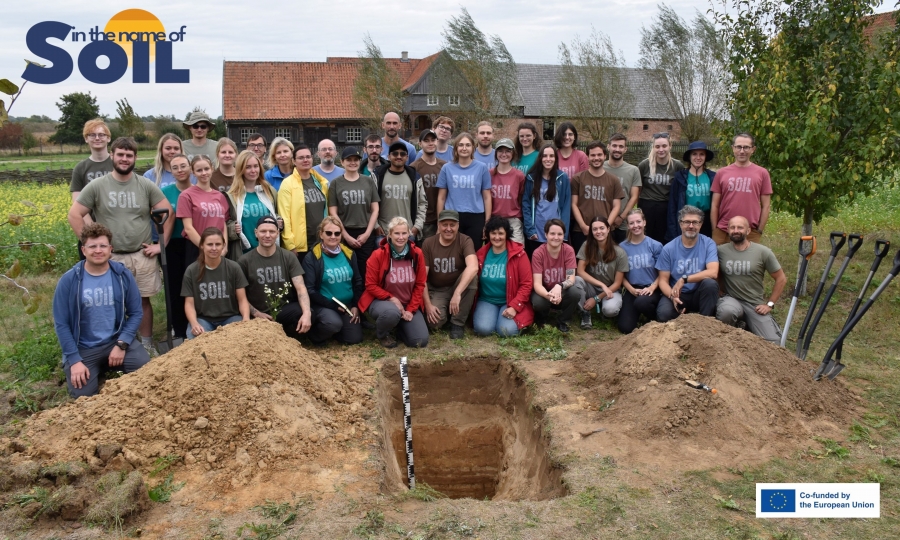
The ecopedological sciece workshop "Blended Intensive Programme - In the Name of Soil" took place in September, bringing together 28 students from Poland, Lithuania, Latvia, Estonia, Czechia, Slovenia, and Spain. During the first three weeks of September, the students participated in online lectures conducted by an international team of instructors, where they learned the intricacies of describing soil profiles and their classification according to the international WRB classification (World Reference Base for Soil Resources).
From September 23 to 27, the participants, along with 11 supervisors (Marcin Świtoniak, Przemysław Charzyński, and Marcin Sykuła from Nicolaus Copernicus University, Endla Reintnam and Merrit Shanskiy from the Estonian University of Life Sciences, Ieva Erdberga and Baiba Buša from Latvia University of Life Sciences & Technologies, Blaž Repe and Lena Kropivšek from the University of Ljubljana, Vit Penižek from the Czech University of Life Sciences, and Rimantas Vaisvalavicious from Vytautas Magnus University), took part in short-term mobility fieldwork as part of the Erasmus+ program, studying soils around the Toruń area. In the virtual part of the workshop, David Badía Villas from EPS Huesca was also a lecturer, while the fieldwork included the participation of Holger Lohse from Landratsamt Sächsische Schweiz – Osterzgebirge and Remigio Paradelo Núñez from Universidade de Santiago de Compostela.
The first day was dedicated to the forest areas of the Pleistocene terraces of the Toruń Basin and the soils formed from sandy deposits – Arenosols, Podzols, and Umbrisols. The day ended with a BBQ integration meeting at the NCU Copernican Integration Centre.
The main focus of the second day was the erosion-induced transformations of morainic plateau soils. While most of the observed transformations related to water erosion, strong winds conveniently demonstrated the mechanisms of wind erosion as well. At the end of the day, the students and instructors attended a presentation by the staff of Czajkowski ST, discussing strip-till cultivation and its role in reducing slope processes caused by agriculture.
On the third day of the workshop, the Polish-Slovenian-Lithuanian-Estonian-Latvian-German-Spanish-Czech group of students and instructors worked on a moraine plateau and the deposits of a former lake basin near Dusocin. The analyzed soil profiles revealed various forms of water's influence on environmental processes, ranging from water stagnation in fine-textured materials to the decomposition of organic matter of gyttja accumulated in shallow water bodies. How to distinguish features of Stagnic and Gleyic properties? It’s not easy, but the course participants gained this specialized soil knowledge that day! The research area was provided by the Lower Vistula Valley Landscape Park.
On Thursday, September 26, the last day of fieldwork, the international group worked on the alluvial plain of the Vistula Valley, specifically in the Olenderski Ethnographic Park in Wielka Nieszawka (a branch of the Maria Znamierowska-Prüfferowa Ethnographic Museum in Toruń), which they toured with a guide before taking shovels in hand. The students were able to observe the significant variation of soils formed from alluvial material. The greatest interest was aroused by the Luvisol formed from alluvium, a result of ancient drainage of the area by Mennonites.
On the final day, the students analyzed the collected results and then presented them during the final assessment session. Everyone completed the course with a positive grade. The event concluded with a humorous presentation of soil-themed memes created during the workshop, followed by the awarding of certificates.

 ul. Lwowska 1, 87-100 Toruń
ul. Lwowska 1, 87-100 Toruń